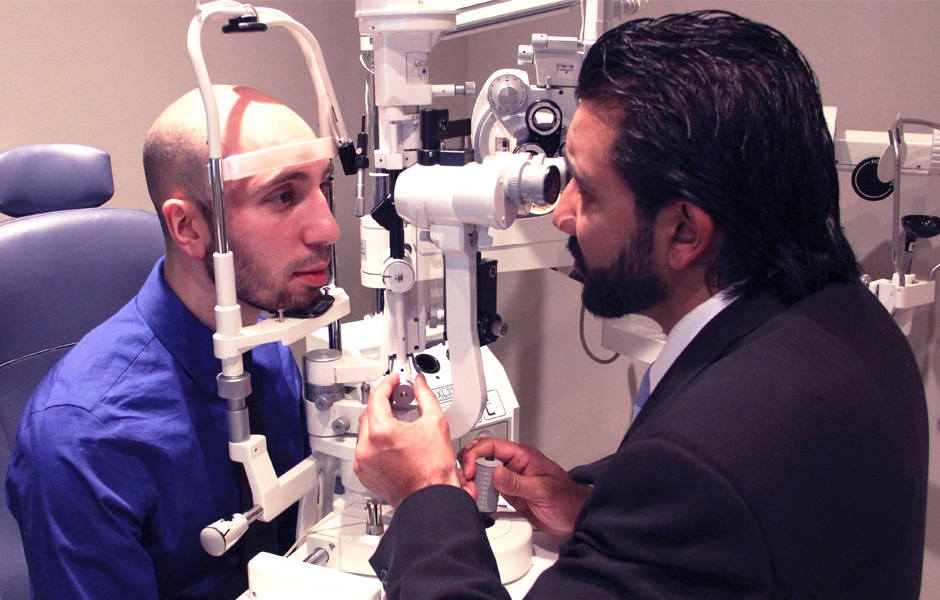Trusted Eye Doctors in Andalusia: Your Vision Wellness Professionals
Trusted Eye Doctors in Andalusia: Your Vision Wellness Professionals
Blog Article
Understanding the Various Vision Improvement Procedures Available for Clearer Sight
In the realm of vision modification treatments, a wide range of options exist to resolve refractive mistakes and offer individuals with clearer view. From the commonly recognized LASIK surgical procedure to less intrusive treatments like PRK and implantable lenses, the field of ophthalmology uses a variety of strategies customized to match different demands and preferences. Each treatment includes its very own set of considerations, advantages, and potential dangers. Understanding the subtleties of these vision adjustment approaches is vital for making notified choices about one's visual wellness. Let's check out the intricacies of these treatments and shed light on the course to accomplishing improved vision clarity.
LASIK Surgery
LASIK surgical procedure is a common refractive procedure utilized to correct vision issues such as astigmatism, farsightedness, and nearsightedness. This surgical technique, which stands for Laser-Assisted in Situ Keratomileusis, intends to improve the cornea to enhance just how light is concentrated on the retina, eventually improving vision clarity.
One of the main advantages of LASIK surgical procedure is the fast enhancement in vision experienced by clients. Many people notice a significant improvement in their vision promptly after the procedure. In addition, the majority of individuals report very little pain and pain during the surgical treatment and healing period. The recuperation time for LASIK is fairly quick, with several people going back to their daily tasks within a day or 2 post-operation. In general, LASIK surgery is a preferred option for individuals looking for a long-term option for their vision issues.
PRK Treatment

PRK is an ideal option for individuals with slim corneas or those at a greater threat of eye injuries, as it does not involve creating a corneal flap. The recovery process for PRK is somewhat longer compared to LASIK, as the epithelium needs time to regrow. Individuals might experience pain and fuzzy vision for a couple of days adhering to the treatment.
Regardless of the longer recovery time, PRK can yield exceptional lead to vision renovation, making it a beneficial choice for those that might not appropriate prospects for LASIK surgical procedure. - Neurologist Andalusia
Implantable Lenses
Unlike PRK where the cornea is improved straight, implantable lenses supply one more approach for remedying vision by placing man-made lenses inside the eye. This treatment is especially helpful for individuals with high degrees of astigmatism, nearsightedness, or farsightedness that may not be suitable prospects for laser surgical treatments like LASIK or PRK.
Implantable lenses, likewise understood as phakic intraocular lenses, work by supplementing the eye's all-natural lens with a man-made one. These lenses can be put before the all-natural lens (anterior chamber) or behind the iris and in front of the all-natural lens (posterior chamber) By changing the power and positioning of these lenses, ophthalmologists can effectively correct refractive mistakes and improve aesthetic skill.
One advantage of implantable lenses is that they are exchangeable and detachable, offering adaptability for future changes. Nevertheless, as with any kind of procedure, there are threats involved, such as infection or cataract development. Individuals thinking about implantable lenses must seek advice from an eye treatment specialist to figure out the most ideal choice based on their private demands and eye health and wellness.
Corneal Rings

The treatment for putting corneal rings is reasonably fast and minimally invasive, commonly executed as an outpatient treatment. Throughout the surgical procedure, the eye doctor makes a tiny laceration in the cornea and inserts the rings at a specific depth. Once in place, the rings help to improve the cornea, offering a smoother surface for light to enter the eye, which can result in more clear vision.
Corneal rings are considered a reversible treatment, as they can be gotten rid of or changed if needed. While they might not totally get rid of the need see post for glasses or contact lenses, corneal rings can substantially enhance vision quality and overall aesthetic convenience for individuals with keratoconus or other corneal irregularities.
Refractive Lens Exchange
Adhering to the improvement of corneal abnormalities with procedures like corneal rings, another vision improvement technique that can deal with refractive errors is Refractive Lens Exchange (RLE) RLE is an operation that includes replacing the eye's all-natural lens with a man-made intraocular lens (IOL) to remedy refractive mistakes such as nearsightedness, presbyopia, and farsightedness. This treatment is especially advantageous for people who may not be ideal candidates for treatments like LASIK or PRK because of factors such as slim corneas or high refractive errors.
RLE is akin to cataract surgical procedure, as both include removing the eye's all-natural lens; however, in RLE, the lens is clear, not gloomy as in cataracts. The man-made lens implanted throughout RLE can be tailored to deal with the person's particular refractive mistake, offering clear vision at numerous distances. Healing time for RLE is reasonably quick, and individuals can expect Learn More enhanced vision right after the procedure. Just like any kind of surgery, possible risks and issues exist, so an extensive consultation with an eye care expert is important to figure out if RLE is the appropriate vision correction choice.
Verdict

In the realm of vision modification treatments, a multitude of alternatives exist to address refractive errors and offer people with clearer sight.LASIK surgery is an usual refractive treatment used to correct vision issues such as astigmatism, farsightedness, and nearsightedness.While likewise a common refractive procedure, the PRK (Photorefractive Keratectomy) technique differs from LASIK surgical procedure in its technique to fixing vision troubles.Following the modification of corneal abnormalities with procedures like corneal rings, an additional vision correction method that can address refractive errors is Refractive Lens Exchange (RLE) LASIK surgical procedure, PRK procedure, implantable lenses, corneal rings, and refractive lens exchange are all choices that can resolve different vision problems.
Report this page